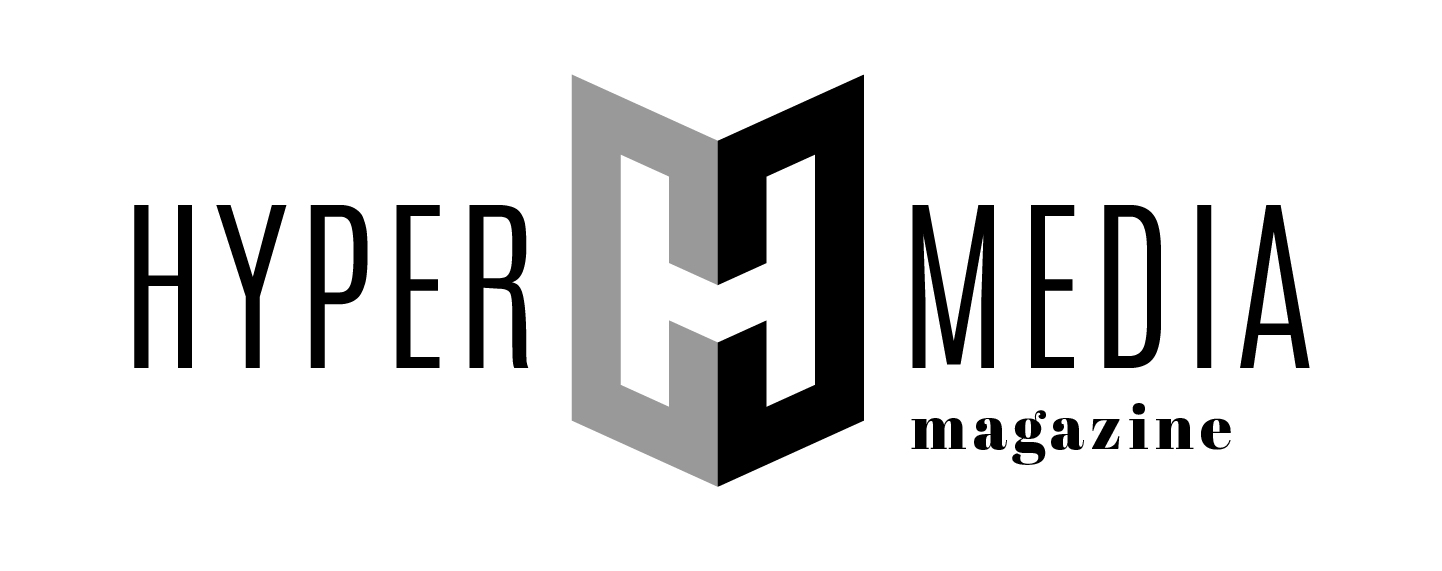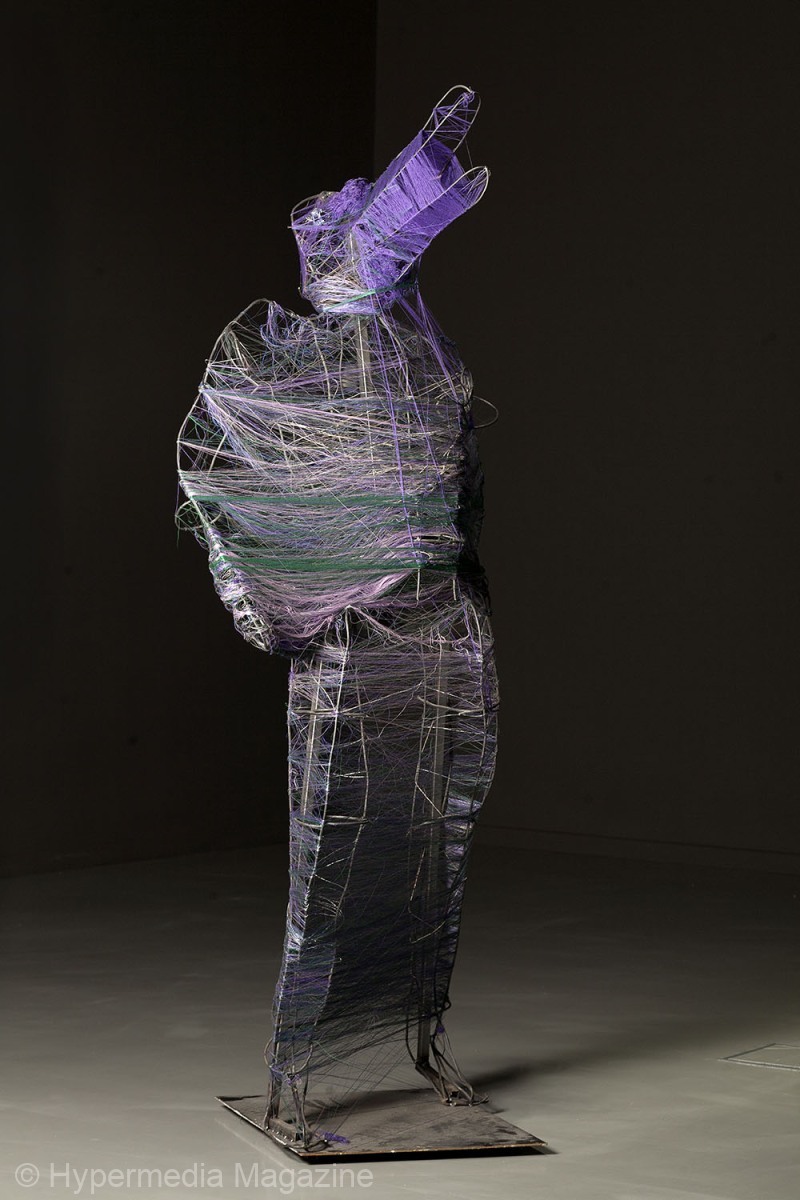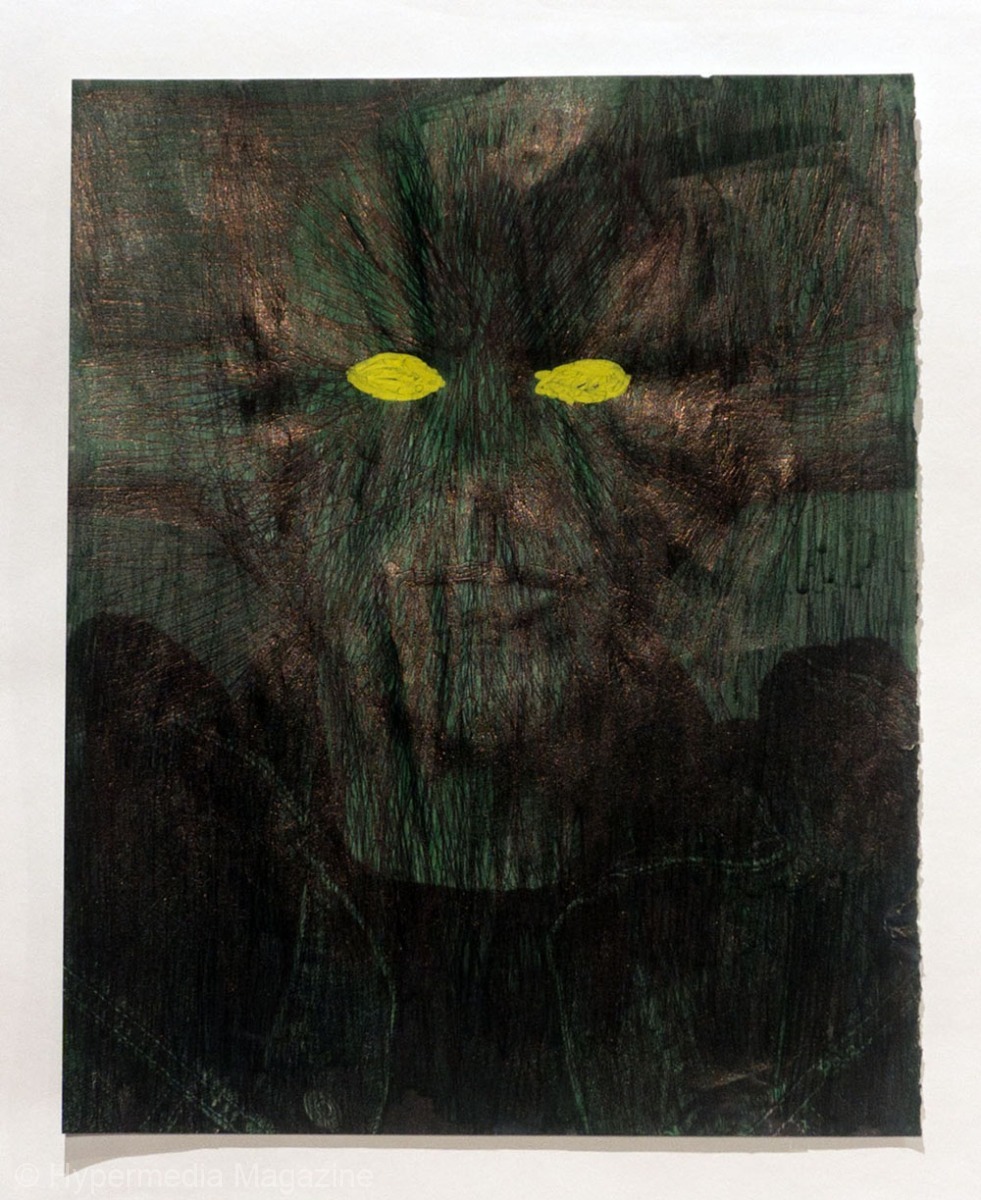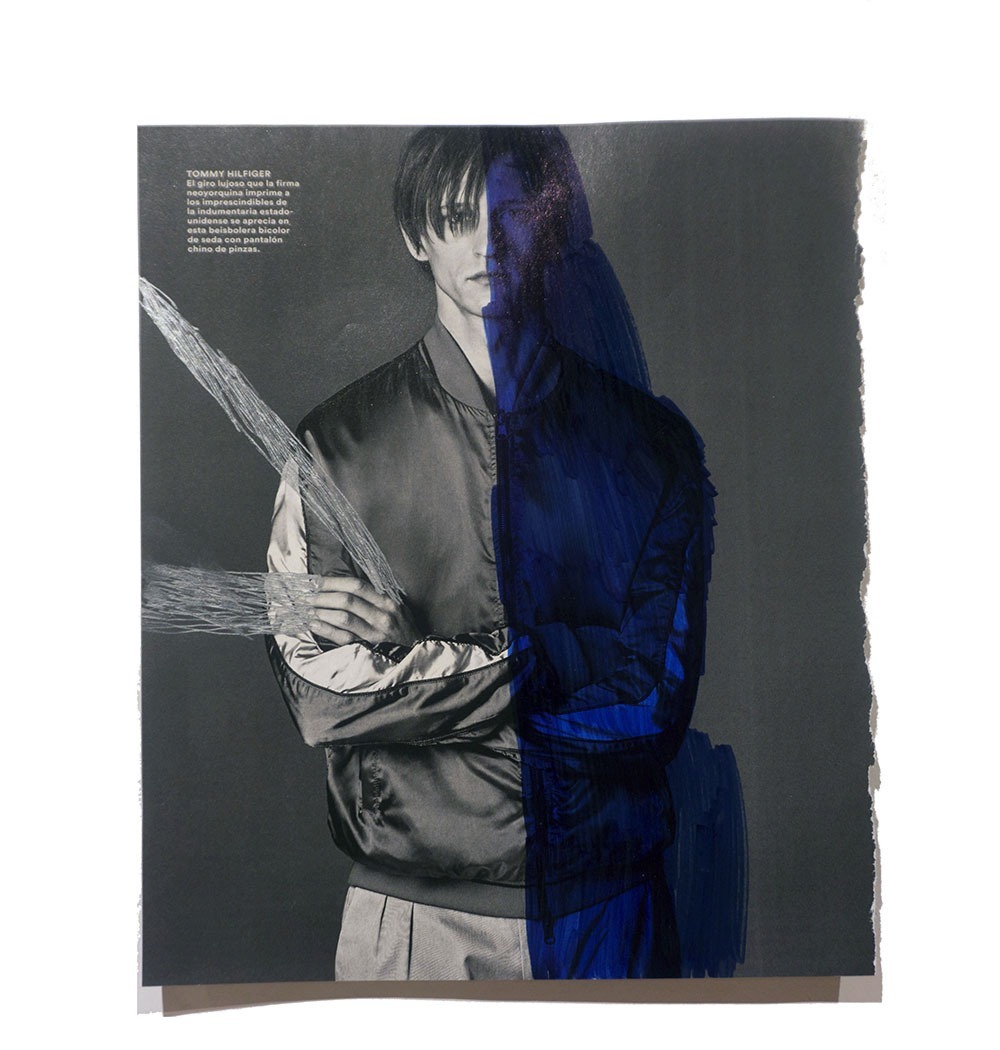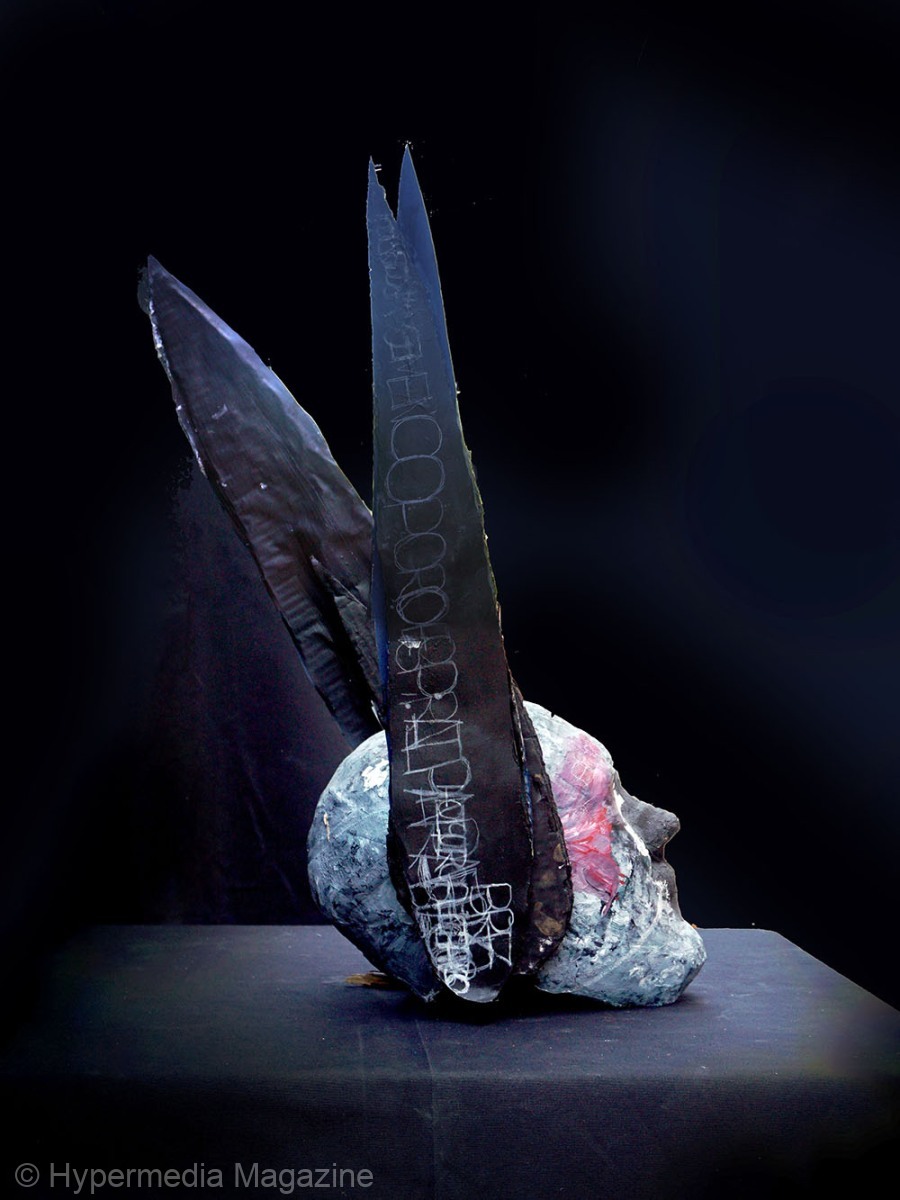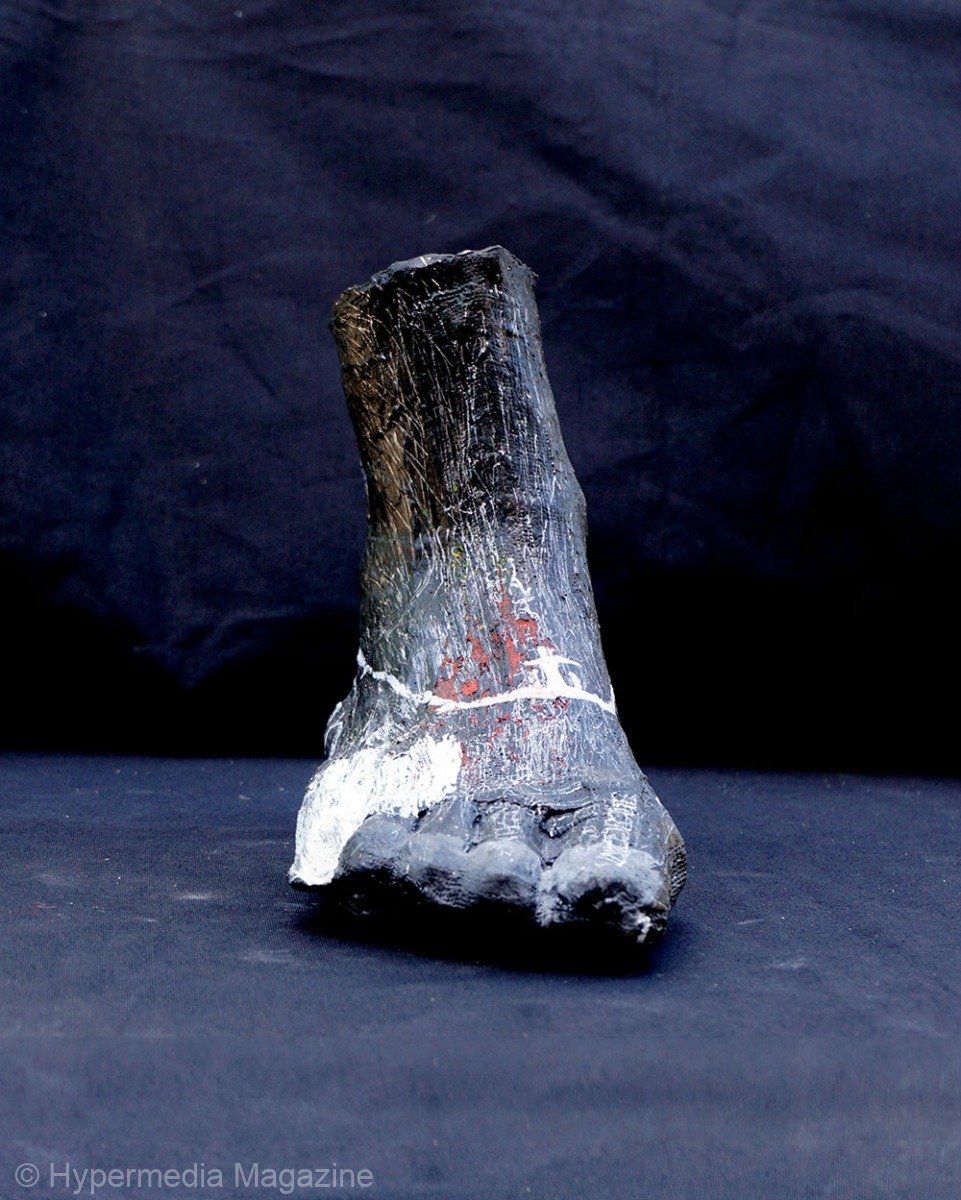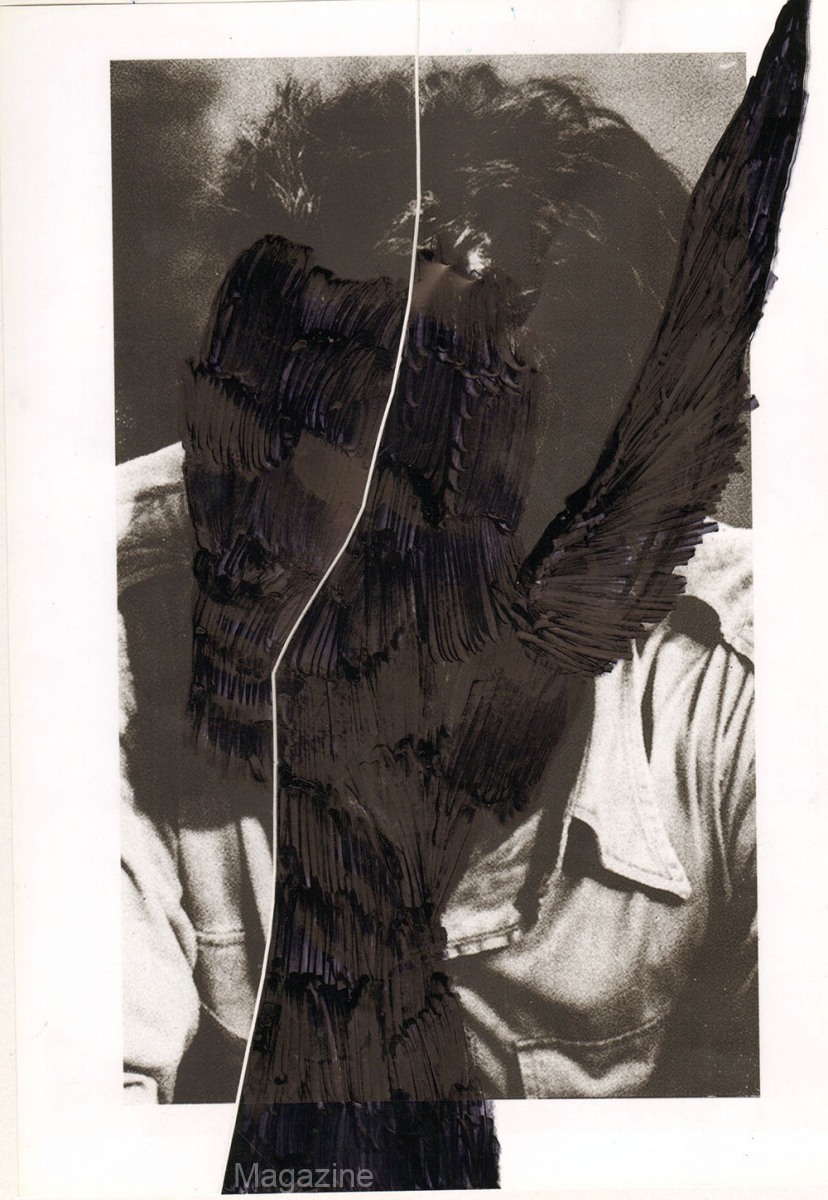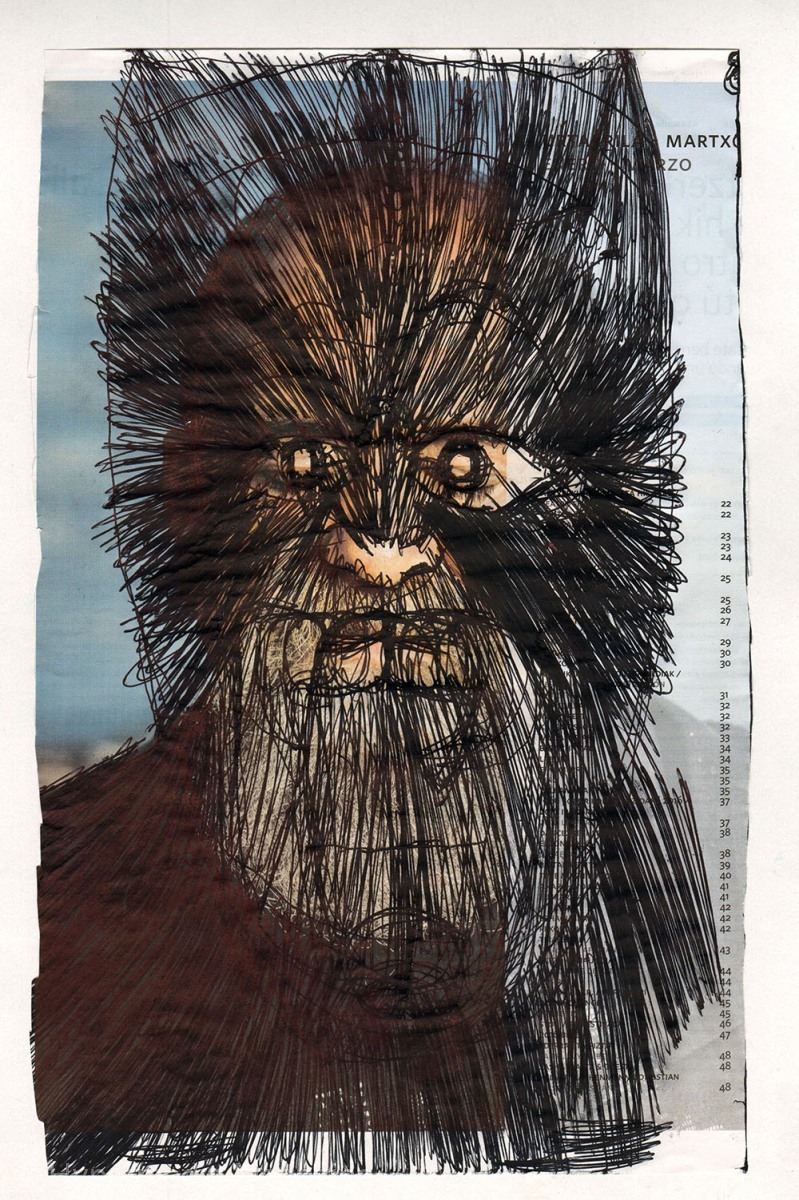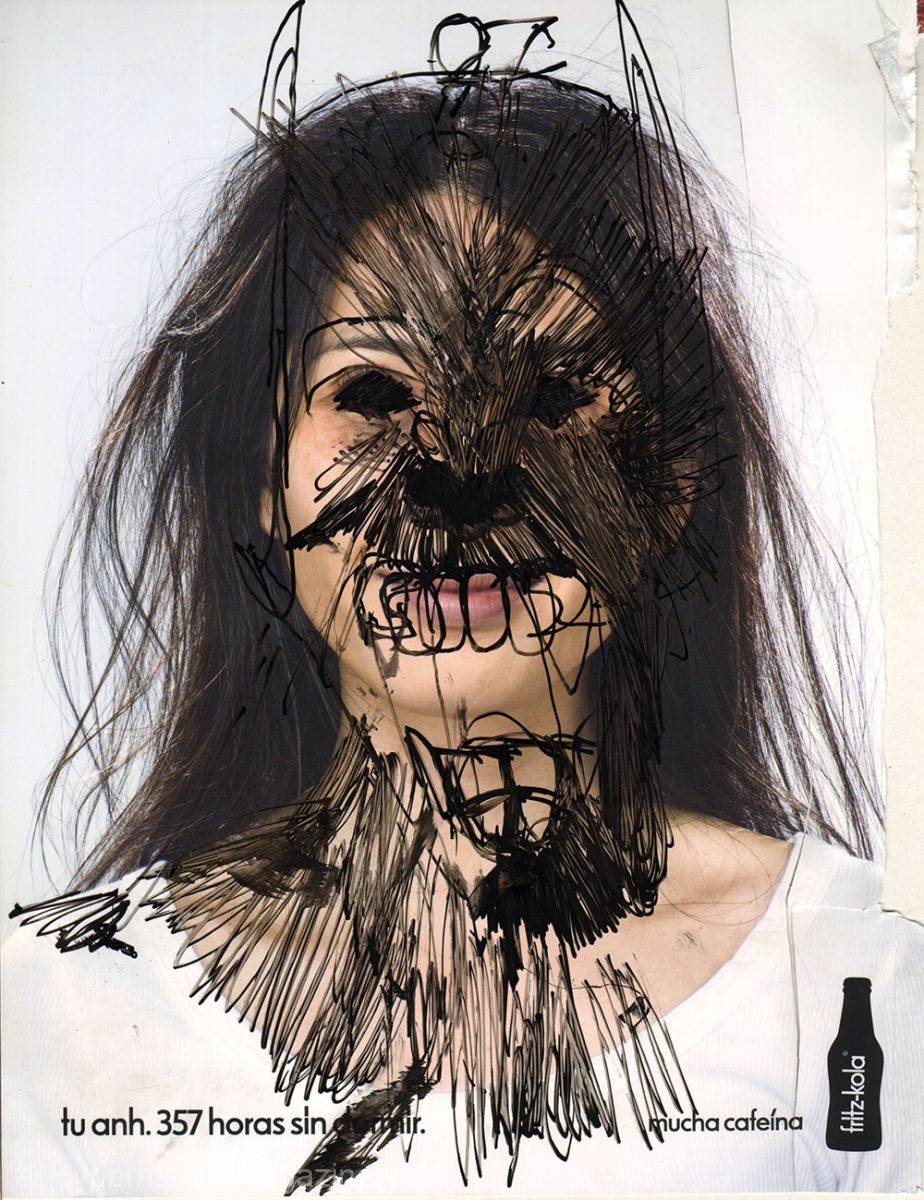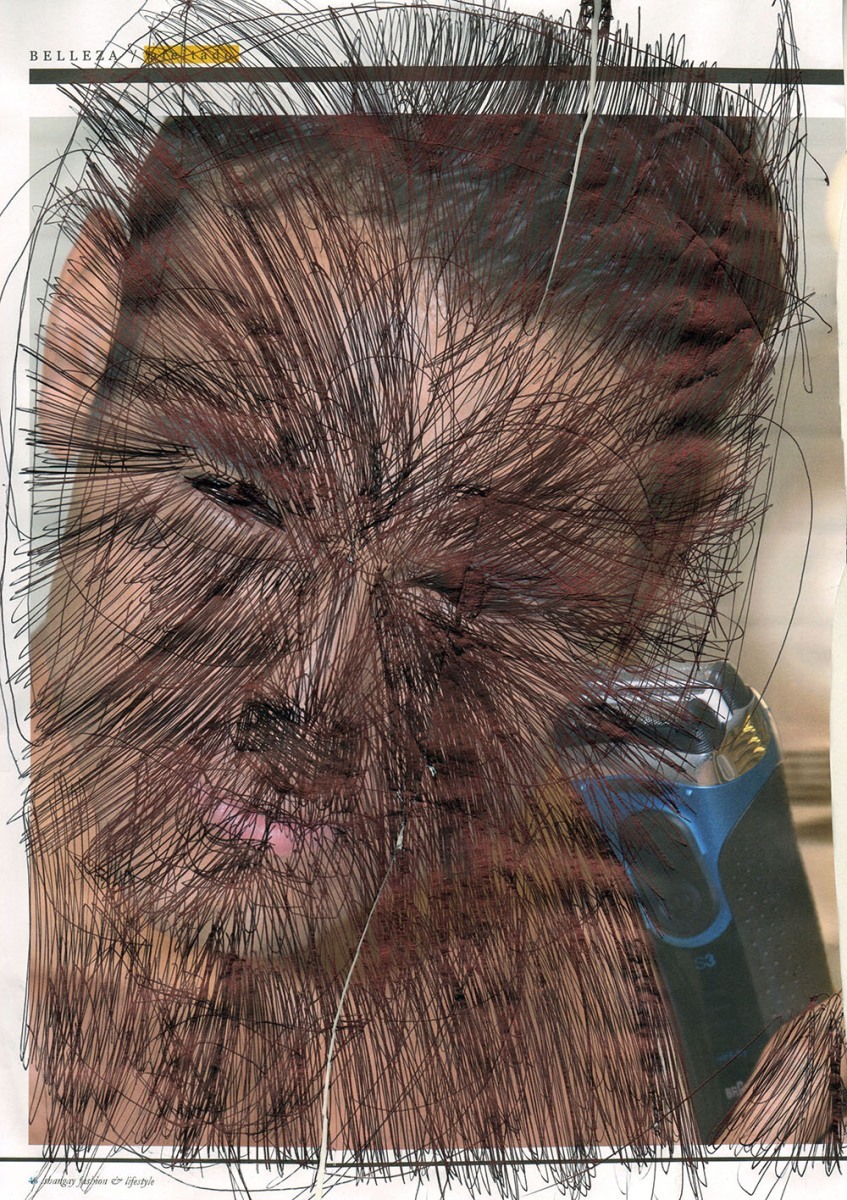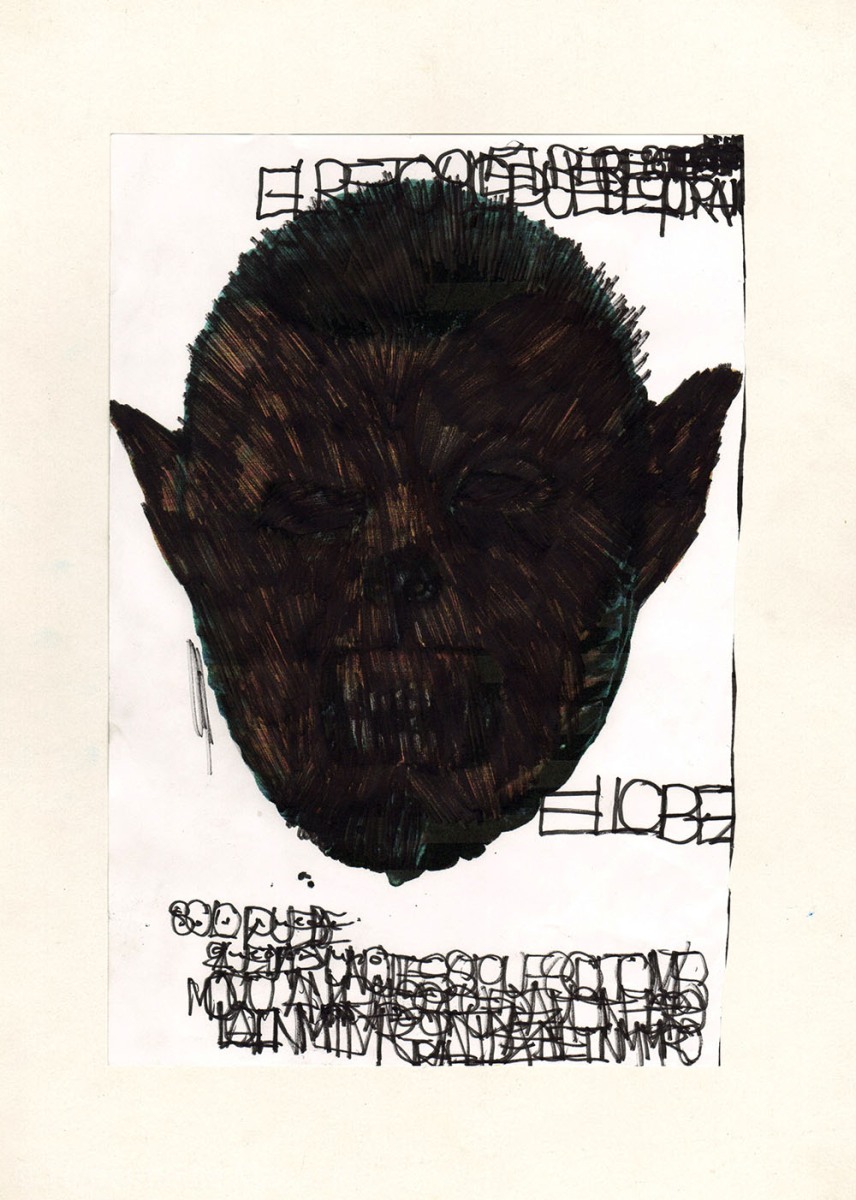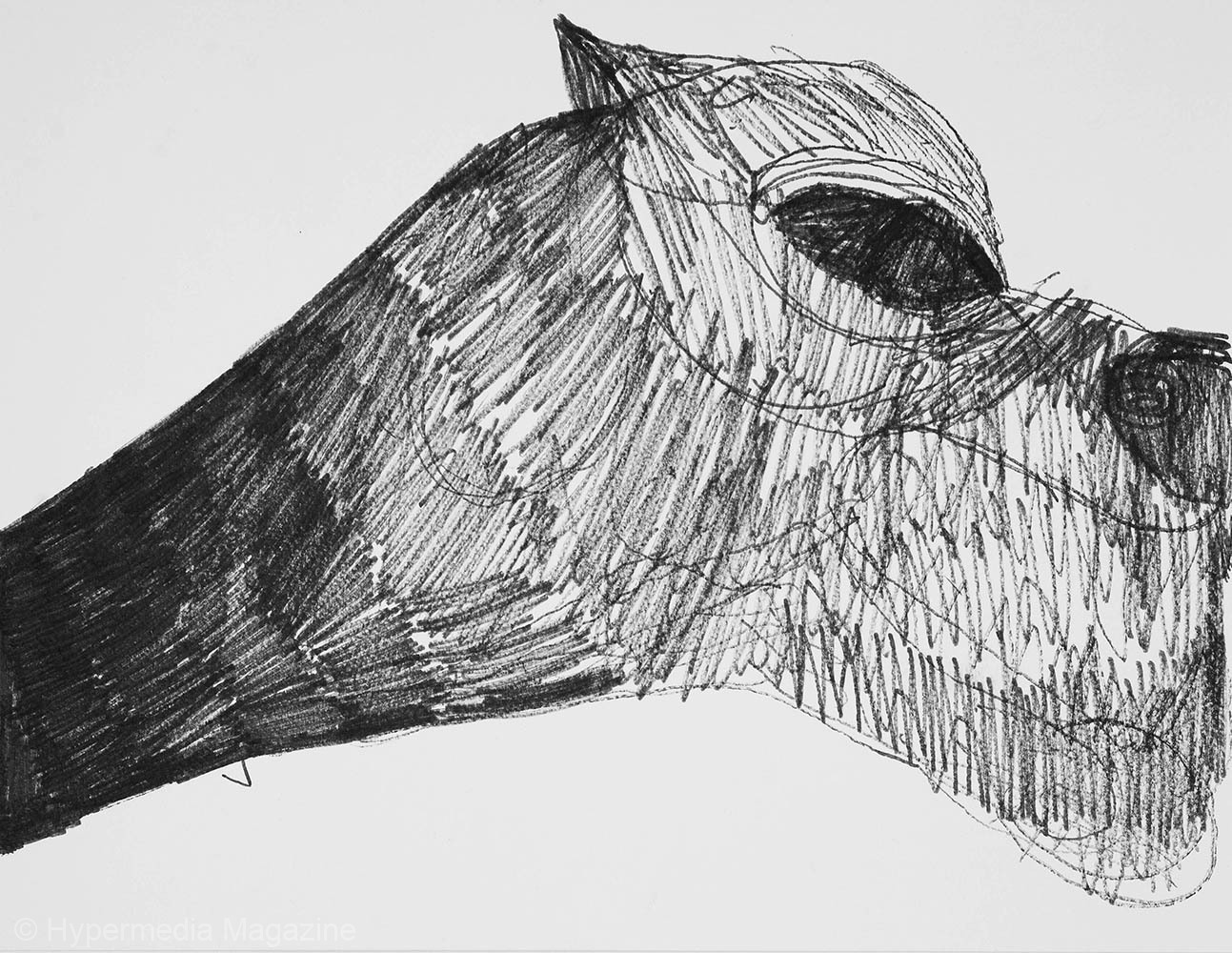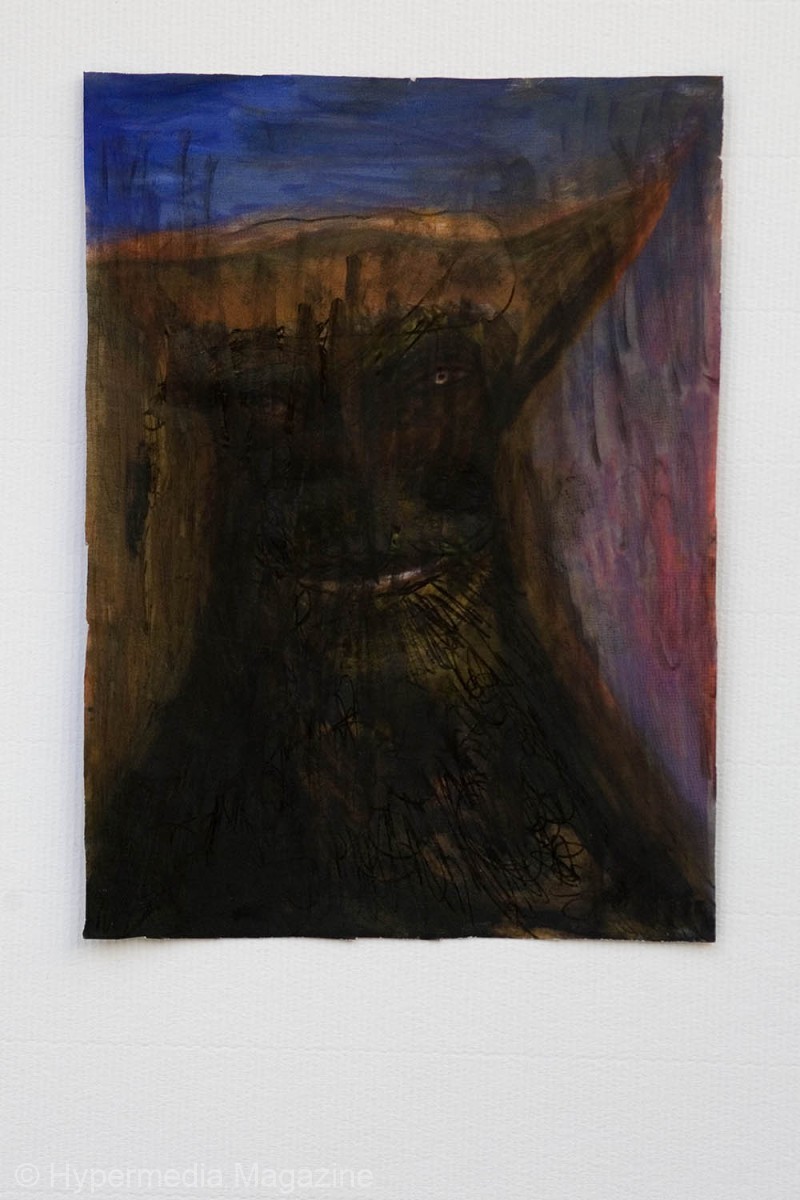Alguna vez hemos escuchado contar de boca del propio José Manuel Egea que “de pequeño” se le “pegó la lobez”. Marca indeleble que desde entonces le puso aparte, separado del resto, forzándole a tomar conciencia de su condición impar.
Inexplicablemente tocado. Elegido venturosamente y a su pesar para cargar con un designio indescifrable que selló su infancia, según sucede con ciertos acontecimientos capaces por sí solos de absorber y transformar para siempre la vida de quienes quedan señalados por su impronta.
Y así, desde muy joven, José Manuel Egea debe a ese episodio el reconocimiento de su cuerpo como sede que acoge el despertar reiterado de su otro yo, no sabemos por qué razón asimilado a la transformación del hombre en lobo, si bien de modo natural, como lo atestigua el testimonio de hombres igualmente aquejados por un mismo trance siglos atrás, o por deslumbrarlo su contemplación en las películas.
Algo significativo al respecto, es el sortilegio que a sus ojos opera la metamorfosis, su éxtasis y poder que comporta, sobre cuantos actores han interpretado dicho papel, quedando atrapados de forma permanente bajo su influjo, tocados a su vez lo mismo que él. O los superhéroes de cómic que ocasionalmente aparecen en sus collages. Hombres igualmente investidos de un poder sobrehumano arraigado en ellos al precio de enajenar y arrebatar sus vidas cada vez que despierta.
Es el caso de La Masa, mitad hombre y mitad bestia. Monstruo predilecto de José Manuel Egea después del Hombre Lobo. Criaturas al fin, acreedoras de la fascinación que le producen sus naturalezas ambiguas y tiránicas. La misma seducción que por otra parte ejerce sobre todos nosotros lo ambiguo, que en su caso se traduce en atracción mezclada de temor ante la amenaza que supone esta presencia agazapada en su interior.
La exigencia más bien que parece dirigirle en demanda de algo, de algún propósito indescifrable que le compromete en el restablecimiento de un tiempo ya remoto. El tiempo de la metamorfosis y la indeterminación del ser, antes de ser definido y lo humano determinado. Es a ese tiempo al que José Manuel Egea conduce de vuelta los rostros y figuras de hombres que pasan por sus manos para acabar irremediable transformados, “machistados”. Atrapados en la procesión de estadios en que se suceden cíclica e inacabablemente entre lo masculino-femenino-animal.
El impulso irrefrenable que actúa sobre José Manuel Egea incitándole a rayar obsesivamente sus dibujos, anuncia o convoca al Lobo a que aparezca y se manifieste en sus atributos más distintivos: pelo, hocico, garras y orejas apuntadas. Aparición a la que sirve de liturgia el dibujo, el acto de dibujar. En verdad, acción de entrar en trato con su otro yo.
El arte, la creación, tiene lugares escogidos donde aparece, con los que uno puede tropezar sin sospecharlo. Lugares privilegiados donde la palabra y la imagen se han ido a encontrar sin usurpar la una el ámbito propio de la otra, al hallar en la despreocupación característica del artista, la diafanidad suficiente que permite la ligereza de su hacer.
En la obra de José Manuel Egea, las palabras brotan, surgen casi siempre inspiradas, ofreciendo con su presencia su sustento poético indispensable evocador de imágenes. El lugar donde la imagen es recibida y viene a cobrar forma. Lo que de modo paralelo ocurre en sus escritos, donde las palabras se posan libre, escapadas a la exigencia de rigor y encadenamiento coherente que las somete en el lenguaje.
Luis Sáez
Director Estudio Debajo del Sombrero
José Manuel Egea (galería)
Portraits under the Hat: José Manuel Egea
We have occasionally heard José Manuel Egea himself explain that, as a child, he “caught wolfishness”. An indelible mark that, it seems, defined his childhood, as it happens with some events whose imprint can permanently transform the people affected by them.
José Manuel Egea owes to such an event the awakening of his other self, forever tied to the transformation of man into wolf. Hence why, particularly werewolf movies and Marvel comics —Hulk, also victim of a brutal transformation, being one his favourites—, have been since then the catalysts that channels his irresistible but ambiguous, two-fold fascination, attraction but also fear of the threat that this ominous presence and its despotic commands represent for him.
José Manuel Egea’s work gives expression to the process of the metamorphosis into the werewolf. A daunting image or vision, that seems addressed only to himself, insinuating something to him: some undecipherable link or kinship that absorbs all of his attention.
José Manuel Egea is fascinated by the ambiguity of this metamorphosis, visible in the way his drawings transit through the masculine-feminine-animal, revealing the presence of a threatening other, irreducible to any kind of moral order. The keen pen scratching technique that he employs both in his drawings and in his interventions on photographs brings out the unavoidable Wolf through a series of distinctive signs: snout, paws, pointed ears and, chiefly, abundant hair.
Something in José Manuel Egea’s attitude towards drawing suggests that the point, for him, is mimicking an action —the action of engaging with that other who unavoidably inhabits and seizes him.
Art, creation, have their places of choice, where one stumbles upon them by surprise. Their lightness and beauty give away manifestations of this kind.
Finding the clarity that it needs to operate in the artist’s characteristic carefree attitude, José Manuel Egea’s language creates one of such places: a place where the visual encounters the word. It would otherwise be difficult to conceive a work so rich both in beauty and quantity.
Attesting to that richness is the periodical and inexhaustible apparition of new attributes for the werewolf in the drawings; novelties that define distinct series of pieces, identifiable by their different aspect and treatment.
In José Manuel Egea’s work, the image of the Werewolf is brought together with the written word in a series of texts of unmistakeable typography. Words that are born free, that have escaped the constraints of a language that would subject them to all kinds of conventions.
Luis Saez
Dir. Studio Debajo del Sombrero
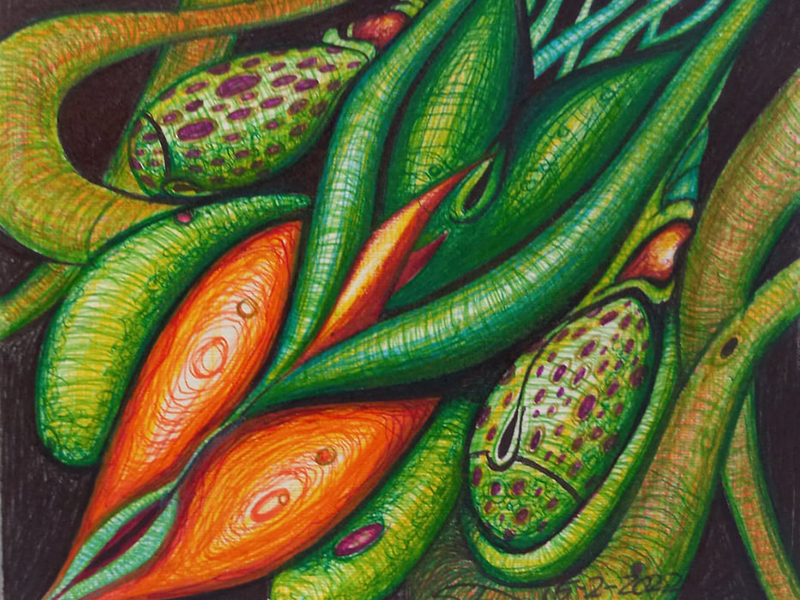
Federico García Cortiza y su ‘expresionismo biológico’
“Buscaba un modo de trabajar directo, a lápiz, que el dibujo se percibiera y que en cualquier lugar que llegara pudiera coger un pedazo de cartón y un lápiz para ponerme a dibujar. Me parece más complejo dibujar que pintar”.
